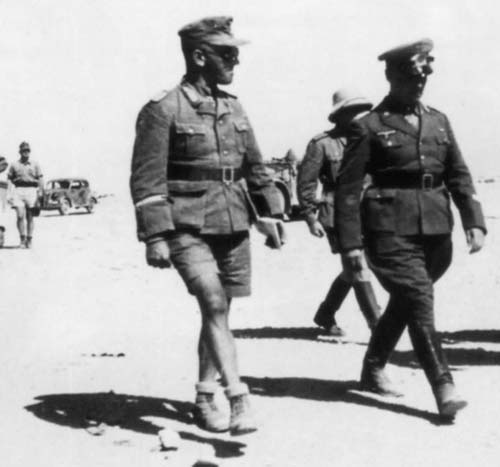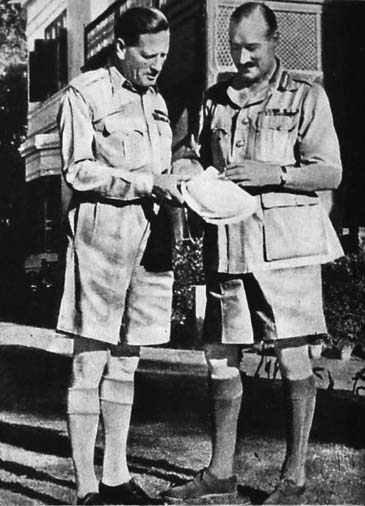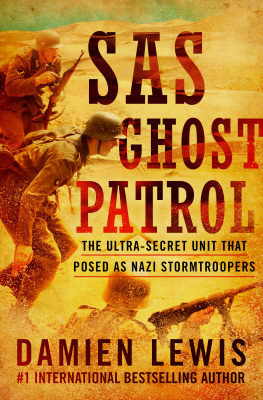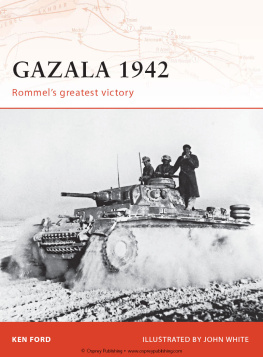The author wishes to thank Dr Christopher Pugsley, Royal Military Academy Sandhurst and the series editor Jo de Vries for their help and support. Thanks also to the following for their help in securing sources and photos: Lieutenant Colonel Filippo Cappellano (Rome), Professor Piero Crociani (Rome), Dr Andrea Molinari (Milan) and Count Ernesto G. Vitetti (Rome).
AFTER THE BATTLE:
THE WINNERS AND THE LOSERS
| 13 December | Sporadic fighting in the Sidi Rezegh area, while Ritchie brings forward reinforcements and new troops arrive |
| 45 December | Rommels last drive against the Tobruk garrison ends in failure. On 5 December he is alerted to the worsening supply situation for the Axis forces |
| 7 December | In spite of Italian opposition, Rommel orders withdrawal to the Gazala line some 15km west of Tobruk |
| 10 December | The Tobruk siege is lifted, the Axis forces withdraw west |
| 15 December | British attack against the Gazala line, Rommel orders a full retreat back to El Agheila, which starts the following day |
| 24 December | British forces enter Benghazi |
| 2830 December | Afrika Korps holds off the British armour at Mersa Brega, effectively halting the Eighth Armys advance |
The end of the Crusader battle did not mean the end of the winter battle, which lasted for some time. Between 11 and 16 December the Axis forces had redeployed to the Gazala line running to the west of Tobruk: the Italian infantry in the north, then the Italian mobile forces and, further to the south, the Afrika Korps. On 10 December, after eight months, the siege of Tobruk came to an end following the withdrawal of the Italian divisions to the west of the perimeter. Delaying tactics successfully halted XXX Corps pursuit, which didnt reach the Gazala line until 13 December. Following a reorganisation of Eighth Armys chain of command on 9 December, XXX Corps was given the task of dealing with Axis forces on the LibyanEgyptian frontier, while XIII Corps would control operations aimed at driving the enemy out of Cyrenaica. The British attack started on 15 December with the 5th New Zealand and the Polish brigades trying to break through the Italian positions just to the south of Gazala, and the 4th Indian Division attacking the Trieste and Ariete positions at Alam Hamza, the key strongpoint. Both attacks were unsuccessful, and hopes were pinned on an outflanking manoeuvre by 4th Armoured Brigade, which was to strike deeply behind the Axis lines at Bir Haleig and Tmimi. However, the limited range of the M3 Stuart tanks delayed the brigade, which only reached Bir Haleig on the afternoon of 15 November. Only on the following day was the brigade able to push forward to Tmimi and face the Afrika Korps, although little damage was inflicted and no serious threat was posed to an enemy that, as it was now clear, was preparing to withdraw further west. That same night the Axis forces pulled out of the line and headed west, into the Jebel Akhdar, unhindered by British armour.
Rommels decision to withdraw caused a great stir in the Italian high command, which was in charge of the whole area; while the Italians wanted to defend the positions west of Tobruk in order to keep Benghazi under control, Rommel wanted to withdraw back to the starting positions of his first drive into Cyrenaica during the previous April. A compromise was reached, with the bulk of the Axis forces left to defend the Gazala line, while the 90th Afrika Division was sent back to Agedabia to protect the lines of communication. Furthermore, the troops deployed at Bardia and SollumHalfaya, who Rommel had asked to be evacuated by sea, had to remain in place, although no one quite knew how they were to be supplied. Two more commanders fell victim both to Rommels fury and the war itself; on 10 December the Italian General Gastone Gambara, commander of the Corpo dArmata di Manovra, was replaced by General Piazzoni after a heated clash with Rommel, while during the same night the 90th Afrika Divisions commander, General Max Smmermann, was killed in an air attack. The battle was still not over. On the night of 16/17 December the Axis forces on the Gazala line withdrew following Rommels orders, which clearly stated that the whole of Cyrenaica was to be evacuated back to the AgedabiaEl Agheila positions. This was a clear consequence of the danger posed by being exposed in such an area, as the Italians had learned bitterly in February 1941, and eventually the Italian commanders agreed to impose a slow withdrawal in order to rescue and save as much materiel as possible from the area.
Trying to avoid being caught in a trap, Rommel had the Italian forces, mostly on foot, moving along the via Balbia coastal road towards Agedabia, while the Afrika Korps was to move inland, first to El Mechili and then back to Benghazi. The first stage of the withdrawal went smoothly, with the Italians reaching the Derna area by 1718 December, and the Afrika Korps also reached El Mechili. Facing the enemy withdrawal, General Ritchie decided on a full-scale pursuit; he sent the 4th Indian Division north along the coast to try to block the road of the Italian withdrawal, while the 7th Armoured Division was sent west to El Mechili. Acting independently, the 22nd Guards Brigade Group (renamed Bencol), was to drive into the desert towards Benghazi, with the aim of seizing and holding the port city. The advance of the Eighth Armys columns was greatly hampered by the climate, with its winter rains, and by a series of demolitions carried out by the retreating Axis forces; only on the 18th did the 7th Armoured Division approach El Mechili, while the 4th Indian Division approached Derna and Lamluda to the west, but were unable to halt the enemy withdrawal. The Bencol force was only able to move on 20 December, and by then the Axis forces had already withdrawn further back to the west, making it very obvious that they did not want to make a stand at Derna or El Mechili; for this reason Ritchie altered Bencols mission, which was now to push west and prevent an enemy escape from the Cyrenaica bulge. By 23 December Eighth Armys columns had made fast progress, reaching Barce, Benina (east of Benghazi), Soluch and Antelat (both south of Benghazi), and threatened to cut off Rommels retreat. Most of the Axis units were already slipping away from the trap, however, and uncertainty about the positions of enemy units (in order to gain speed these columns were down to the barest essentials, often lacking strength and supplies, and hampered by overstretched lines of communication) made a repetition of Beda Fomm practically impossible. On 23 December the 15th Panzer Division spotted and attacked an approaching column of the Coldstream Guards and, despite support from the 3rd RTR, the British column was pushed back to the east of Antelat, withdrawing after the arrival of the bulk of the 7th Armoured Divisions Support Group. By then the Italian units had already slipped away from the trap and started to build a defence line at Agedabia, soon to be joined by the Afrika Korps.


Having not accurately assessed the situation, Ritchie and Godwin-Austen sent their units to clear the area south of Benghazi, while the Axis forces consolidated their positions around Agedabia. Only the following day did the situation became clearer, and Godwin-Austen ordered the 22nd Guards Brigade to attack the enemy positions on 2627 December; however, the enemy resisted fiercely and the attack ended with a failure. Similarly, the first major tank battle since the Axis withdrawal followed on the 28th, ending in another British withdrawal. Having regained confidence, both Rommel and Crwell decided to defeat the enemy armour piecemeal and, having noticed a gap in the enemy deployment, sent the 15th and 21st Panzer divisions (with a total of about sixty tanks, including forty-two medium) against the 22nd Armoured Brigade to the south of Agedabia at El Haseiat. The Germans won the day, destroying thirty-seven out of ninety British tanks (thirty-five M3 Stuarts, the rest Cruiser tanks), at the cost of seven of their own. The attack was renewed on 30 December, and again it ended in victory for the German forces: twenty-three out of sixty-two British tanks were destroyed or damaged, at the cost of seven Panzers. The 22nd Armoured Brigade was withdrawn to rest and refit. Axis forces did the same, after Rommel decided to hold out at Agedabia longer than he had forecast. At this point there was little that Ritchie could do apart from try to regroup his forces and prepare for a full-scale assault against the enemy positions. However, it was clear that, this time, Rommel was not going to wait for it.














